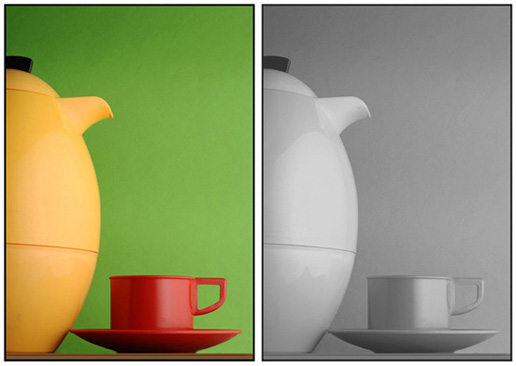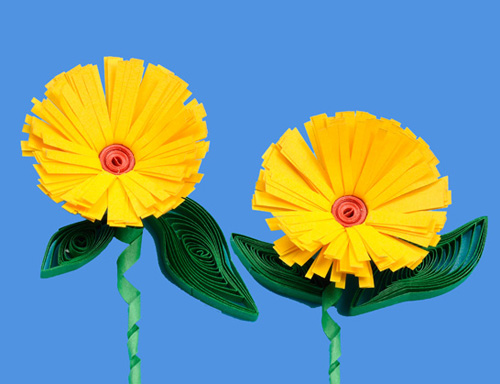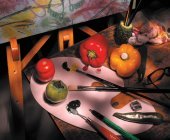|
Colour ContrastContrast is the key factor to achieve punch in a picture. There can be colour contrast and tonal contrast in a photograph. Contrast separates out the main subject from the back ground and makes the subject look more dimensional and readable. Colour contrast in photography can be achieved by selecting opposite colors of the subject and the background. This can be red and green, yellow and blue, green and yellow, red and yellow or blue and red. As we can see, primary colors work better than secondary colors. If we are shooting a subject with bright and saturated colors, then tonal contrast is not very important. Even if the lighting is very soft and frontal, we will get a good striking result.

The example above explains how much contrast, colors can create. Though in this image, there is very little tonal contrast, contrasting colors of objects and background makes the picture. (When we convert an image in black and white, we can notice the range in tonal gradation. An image is considered having good tonal contrast when there is a spectacular highlight, which is nearly white and dense shadow, which is nearly black. Both extremes should have some details. However, in the example showed above, the photograph does not have enough tonal contrast as there is no spectacular high light and no dense shadow area.)

Simple lighting can be used when we have enough contrast in color. Lighting can be angular but it should be soft. Medium or hard light will increase tonal contrast in the image, and over all look and result will become "too much". Increase tonal contrast only if colors are not vivid. When we are shooting a subject for commercial use, avoid depending more on contrast of color. Photographs shot for commercial use may be converted in black and white for printing in a news paper or a magazine advertisement, and in that case, contrast in tonal value becomes more important. In such case, the photograph will not look that appealing. This kind of result have an unusual feeling as it is rare in nature, and therefore, it seldom works in landscape photography and never work when we want to create a calm and tranquil atmosphere. Read about:
|






